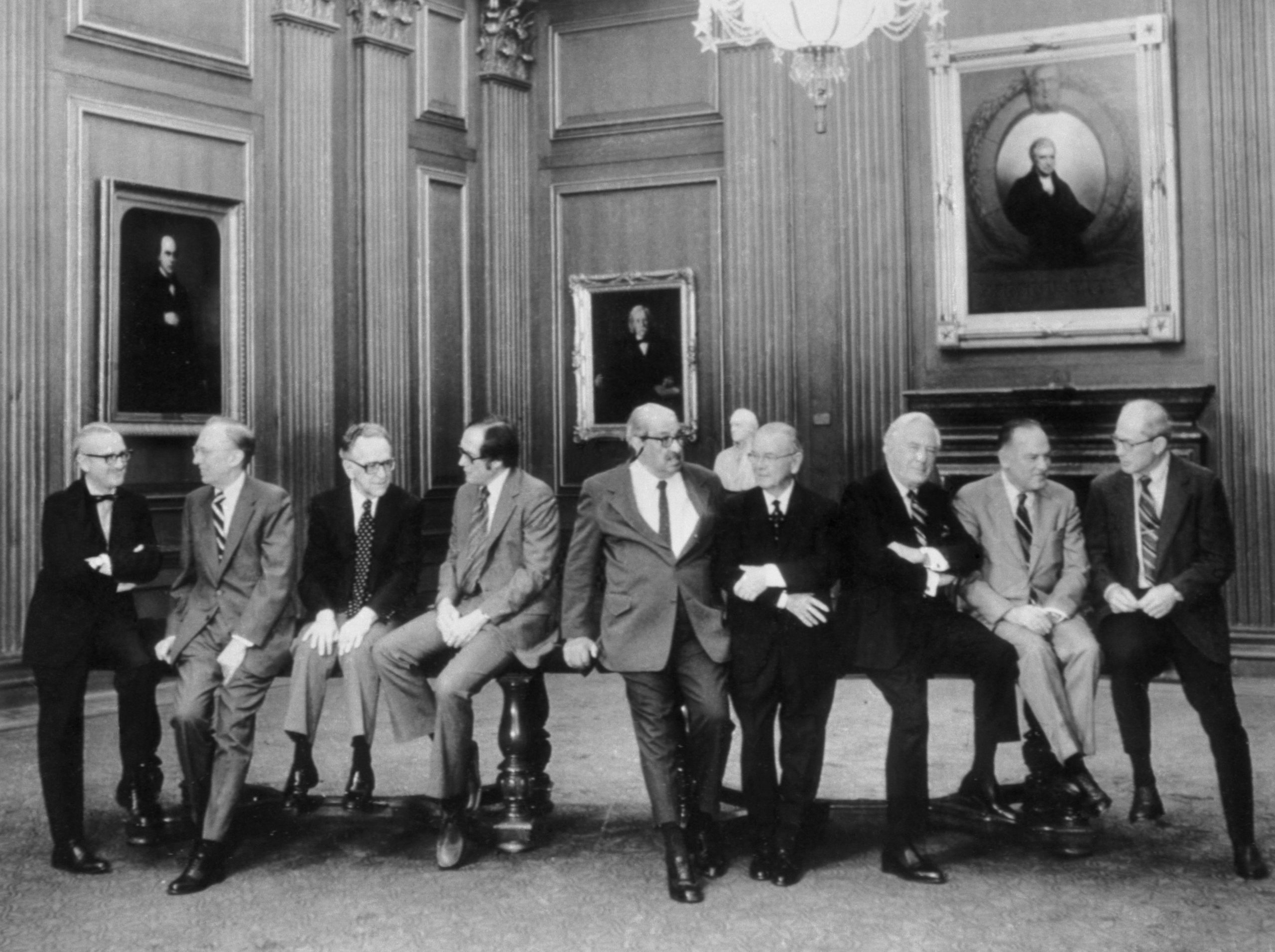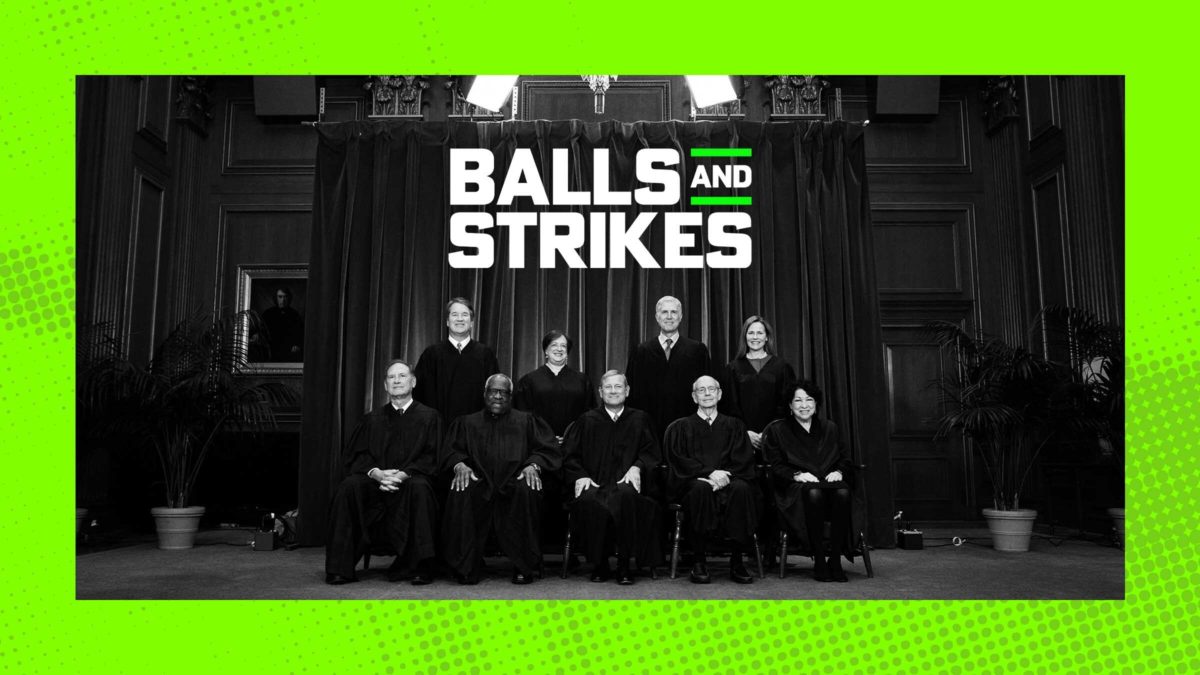Last week, Chief Justice John Roberts released the 2022 edition of his year-end report on the federal judiciary. As you might guess, even in a crowded field of competitors, these annual reports are reliably among the driest documents the federal government produces: a handful of statistics about the judiciary’s workload, preceded by an introduction from Roberts built around some obscure vignette from the judiciary’s past. It is part executive summary, part book report, and part glorified Supreme Court Christmas card.
Chief justices often use these reports to thank some unsung heroes of the judiciary—administrative employees who worked to keep courts open during COVID-19, or during hurricanes in Texas and wildfires in California. But they also give Roberts the chance to respond to critics, or weigh in on news stories that implicate his work. Last year, for example, he addressed reporting from The Wall Street Journal on a rash of undisclosed conflicts of interest within the judiciary, calling for “greater attention to promoting a culture of compliance, even when busy dockets keep judicial calendars full.” (Among his proposed solutions: “more class time, webinars, and consultations,” because there is no workplace problem that requiring employees to click through a mandatory pre-recorded compliance training cannot solve.)
This year’s edition splits the difference. Roberts begins by recounting the tale of Judge Ronald Davies, who oversaw the integration of Little Rock Central High School in 1957 after the Court decided Brown v. Board of Education. Despite ongoing threats of violence from white supremacists, Roberts writes, Davies remained “uncowed.” Against this historical backdrop, he concludes by thanking the U.S. Marshals, Supreme Court Police Officers, and other law enforcement officers who are charged with protecting judges from harm, thus preserving their sacrosanct independence.
“A judicial system cannot and should not live in fear,” Roberts writes. “The events of Little Rock teach about the importance of rule by law instead of by mob.”

“So I’ve spent some time on Wikipedia lately, and…” (Photo by Chip Somodevilla/Getty Images)
This choice of topics is not a coincidence. In the wake of Dobbs v. Jackson Women’s Health Organization, in which the Court ended the federal right to abortion care last year, protesters staged peaceful demonstrations outside Roberts’s suburban Washington home, as well as the homes of Justices Samuel Alito, Brett Kavanaugh, and Amy Coney Barrett. In June, a California man was arrested and charged with attempting to assassinate Kavanaugh after traveling to his Maryland neighborhood with a gun and burglary equipment. After seeing law enforcement outside the house, the man called 911 and turned himself in, saying that he needed “psychiatric help.” Congress responded by passing legislation to enhance the security available to the justices and their families, which President Joe Biden signed that same month.
Obviously, plotting to murder a Supreme Court justice (or anyone else, for that matter) is outside the scope of acceptable political protest. That said, it is more than a little gross for Roberts to implicitly place the judiciary’s role in ending Jim Crow on the same moral plane as its role in robbing millions of people of their right to bodily autonomy. And as Jordan Rubin points out at MSNBC, Roberts’s invocation of Brown comes at a time when he’s likely to join an opinion gutting its core holding in the affirmative action cases later this year. To Roberts, the same strain of judicial courage that Davies showed while desegregating public schools will justify his de facto vote to resegregate colleges and universities some six decades later.
The more alarming takeaway from Roberts’s report is that these documents are reliable barometers of his priorities—of what matters to him and what doesn’t. Unmentioned, for example, is the leak of the draft majority opinion in Dobbs, which an incensed Roberts vowed to investigate and then mysteriously forgot all about. Also absent is any discussion of a New York Times report that Justice Samuel Alito, who authored that Dobbs opinion, may or may not have a history of leaking exactly this kind of thing to his fellow right-wing activists. In the fall, Ginni Thomas had to explain to members of the House Select Committee on January 6th why, while her husband was ruling on harebrained challenges to the 2020 election results, she was firing off texts to Trump’s chief of staff about looming Guantanamo Bay military tribunals for the “Biden crime family & ballot fraud co-conspirators.” If Roberts finds any of these developments, say, “troubling,” or at least worthy of acknowledgement by the leader of an ostensibly impartial federal judiciary, you would not know it from reading his State of the Supreme Court address.
Among establishment legal journalists, the prevailing narrative about John Roberts is that he is an institutionalist above all else—a conservative, yes, but also a principled jurist who cares deeply about preserving public trust in the Court, and fulfilling his solemn responsibility to uphold the rule of law. This was never right, but now, it has never been more obviously, howlingly wrong. Roberts knows the Court’s approval rating is in the toilet, and why, and the work it would take to begin to fix it. Given all the conservative policy goals the Court has fulfilled of late, however—and all the conservative policy goals it will accomplish in the years to come—that is work he has no interest in doing. He is more than happy to throw together a few platitudes, wish everyone a Happy New Year, and log off.
As always, you can find us at ballsandstrikes.org, or follow us on Twitter at @ballsstrikes, or get in touch via [email protected]. Thanks for reading.
This Week In Balls & Strikes
Just 34 Counties Account For Half Of America’s Death Sentences, Yvette Borja
The Supreme Court says capital punishment is OK as long as states administer it “fairly.” States are failing that test in spectacular fashion.
Write For Balls & Strikes This Year, Or Else the End Of Democracy Will Be All Your Fault, Jay Willis
Here’s how to pitch B&S, and why you should (must??) do it in 2023.
Supreme Court Kicks Off 2023 With Exciting New Ethics Scandal, Yvette Borja
Who could have guessed that an obscure nonprofit dedicated to Supreme Court history would attract people with a vested interest in the Court’s work?
This Week In Other Stuff We Appreciated
The Chaotic House That SCOTUS Built, Dennis Aftergut, Slate
The ongoing humiliation of Kevin McCarthy by Freedom Caucus morons can be traced back to the handiwork of the Supreme Court’s conservative justices.
The Supreme Court Is Manipulating Its Own Calendar to Lock GOP Policies In Place, Ian Millhiser, Vox
The Supreme Court is the most important source of Republican political power, part 3,329.
The Supreme Court May Kick Off 2023 With a Huge Gun Rights Ruling, Mark Joseph Stern, Slate
The Court’s pew-pew-pew era is officially underway.
This Week In Obscure Photos of Supreme Court Justices On Getty Images


